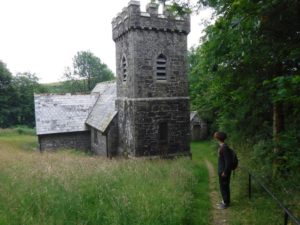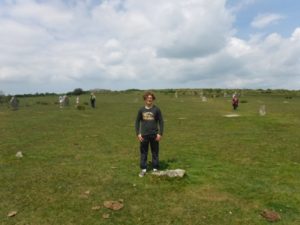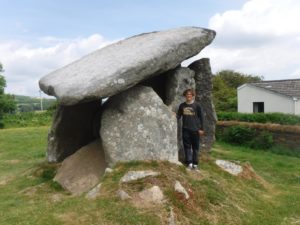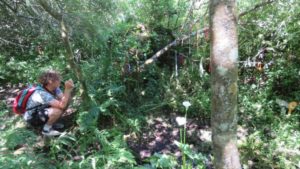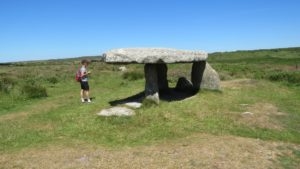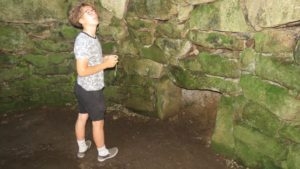Activity Blog
Perran Round
Whilst researching an article for the weekly heritage article included here as a heritage blog we visited the historic Perran Round near Perranporth.
In 2019 we were approached about providing a work experience placement for a youngster from Newquay Tretherras School. We were pleased to do this as it helped carryout our remit relating to education.
Many people throughout Cornwall do not take advantage of the huge amount of ancient and historic sites we have to enjoy here. This was an opportunity to share some of this with a young person, during a period of fantastic weather. We ended up taking Shay to a number of sites travelling around Cornwall and giving him an overview of all of them and sharing some of Cornwall's history.
St. Catherine's Church is located in the tiny hamlet of Temple, on Bodmin Moor, and stands on the site of what was the earlier Templar chapel. It formed part of the medieval Preceptory of Trebeigh. In 1934, the parish of Temple was incorporated into the parish of Blisland.
It is not known exactly in what year the 12th c. church, dedicated to St. Catherine of Alexandria, was built. It stands on the site of the earlier Templar chapel
Restoration started in 1850's followed as closely as possible those of the original Templar church. The ancient tower arch was kept and wherever possible, relics and other stones were used.
The Hurlers, near Minions on Bodmin Moor, three early Bronze Age stone circles is one of the best examples of ceremonial standing stones in the south-west and is associated with many Cornish legends. The southern-most circle is incomplete, but the other two have been restored. Two standing stones, ‘The Pipers’, lie to the west of the site.
http://www.cornwallheritagetrust.org/our-sites/the-hurler-stone-circles/
Trethevy Quoit is a particularly well preserved “portal dolmen”, a burial chamber from the late Neolithic period. It is one of the most impressive in Britain. This chamber tomb is dated from the Neolithic or late Stone Age, and may have been built sometime in about 3500 BC. It is sited on a promontory overlooking the confluence of streams which flow southwards to become the River Seaton; the northern skyline is dominated by Caradon Hill and granite massif of Minions Moor.
http://www.cornwallheritagetrust.org/our-sites/trethevy-quoit/
Madron Holy Well lies about 0.25 mile into the boggy area (Note – the area below the Cloutie Tree is not the well, though many believe it to be so), and is identifiable by a stone enclosure of granite slabs, which could be submerged below the water in particularly wet conditions. This stone surround was rebuilt in the early 1980s from stones found in the area, so it may not be exactly how the well originally looked, though it probably is quite close. The well probably originally dates from pre-Christian times, and was here long before the Baptistry (Well-Chapel) was built.
https://www.cornishancientsites.com/ancient-sites/madron-holy-well/
Lanyon Quoit perhaps the best known and most photographed of any of Cornwall’s prehistoric monuments, but is also unfortunately one of the least authentic! Dating from the early Neolithic period (3500-2500 BCE) and consisted a large capstone 5.3m long and 2.7m wide on 4 upright support stones, similar to Chûn Quoit on the moors to the west. In 1815 it collapsed during a storm and some stones were fractured, so that when re-erected in 1824 (at right angles to its original position) the capstone was placed on only 3 uprights which were shortened and squared off.
https://www.cornishancientsites.com/ancient-sites/lanyon-quoit/
Carn Euny a well-preserved Iron Age village with a well-preserved souterrain or fogou. The walls, up to a metre high in places are well-preserved; only the wooden, thatch and turf elements of the houses have gone, leaving it relatively easy to stand in the heart of the village and reconstruct what it must have looked like 2000 years ago. Lying on the south west slope of Caer Brane, this courtyard house settlement of the Iron Age and Romano-British periods was occupied from about 500 BC to AD 400.
